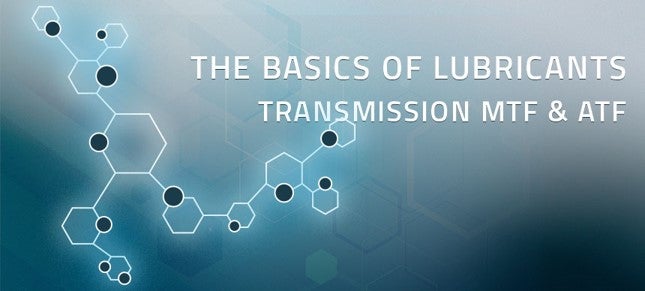The basics of lubricants: the guide to understanding transmission fluids/gear oil (6/9)

What do transmission fluids do exactly? What main types are there, and how do you recognise them? Get all the answers in this article.
Earlier in our series on the basics of lubricants, we showed you around the concepts of base oils and additives .
These are usually mentioned in the context of motor oil – oil that is necessary for an engine to run smoothly and efficiently. Motor oil is the lubricant that you'll see most commonly.
Today, we're introducing you to motor oil's little brother. It's another lubricant that is less known but necessary for any motor vehicle to function properly: transmission fluid.
Transmission fluid, also called gear oil, ensures smooth functioning and extended life of transmissions, transfer cases and differentials in cars, trucks and other machinery.
Like motor oil, they are composed of base oil (mineral, semi- or fully synthetic) and additives.
The two kinds of transmission fluid
Transmission systems come in two sorts: manual and automatic. Unsurprisingly, each demands its own transmission fluid:
- Lubricants for automatic transmissions are called ATFs: Automatic Transmission Fluids.
- For manual transmissions, these are called MTFs or Manual Transmission Fluids.
(Side note: beyond the division between ATFs and MTFs, there is a myriad of different types of transmission fluid available. But that is material for another article. To find the transmission fluid that is perfect for your car, try our online product reco tool )
MTFs: what's good to know
MTFs have a high viscosity, which is to say they are 'thicker'. Why? Manual transmissions do not have pumps that distribute the oil throughout the system. Thinner, low-viscosity oil would leave only the lowest part of the system bathing in oil sump. This would lead to inefficient operation.
A high-viscosity MTF, however, 'sticks' throughout the whole system to ensure optimal operation.
What about additives? MTFs usually contain extreme pressure additives to cope with the conditions within manual transmissions. Also called EP additives, these contain certain compounds that react with yellow metals such as copper and brass. An MTF for systems that do contain yellow metals should, therefore, be chosen with care.
MTFs also contain anti-wear additives to cope with the sliding action of hypoid bevel gears.
ATFs: what's good to know
ATFs lubricate automatic transmissions. Different ATFs are for different transmission types, such as:
- Dual Clutch Transmission (DCT)
- Continuous Variable Transmission (CVT)
- and 6-, 7-, 8-, 9- and even 10-speed MB Automatic Transmission.
Besides lubrication, they can serve other functions as well, thanks to additives. Think:
- keep the transmission cool
- clean and protect metal surfaces from wear
- condition gaskets (seals that join two surfaces)
- increase rotational speed and temperature range.
- other than engine oils, ATFs are coloured (red or green) to distinguish them from other liquids used in a vehicle.
How to read transmission fluid API ratings
The American Petroleum Institute, which sets standards for lubricants, classifies gear oils using ratings: GL ratings. These run from GL-1 to GL-5. The higher the number, the more pressure the fluid can sustain without metal-to-metal contact taking place between transmission components.
Most modern gearboxes require separate differentials, which experience a higher pressure between metal parts. These gearboxes require fluids classified as GL-5.
Besides the GL classification, the Society of Automotive Engineers (SAE) sets standards for the viscosity of transmission fluids as well. A fluid can, for example, have a 75W90 viscosity. Take note that the viscosity of motor oil and transmission fluids are not represented in the same manner, though. 75W90 corresponds to 10W40 motor oil in absolute viscosity. That's why a common mistake is to think a transmission fluid is thicker (has a higher viscosity) than it actually is.
One more API classification for gear oils is MT-1. These fluids are fit for non-synchronised manual transmissions used in buses and heavy-duty trucks. They provide protection against temperature changes, component wear and the wear of the oil seal.
Which transmission fluid do you need?
You can either refer to your car's owner's manual, or easily find the right gear oil for your vehicle on our website when you enter your car brand and model.